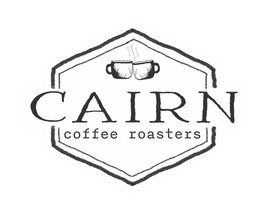The Most Overlooked Brewing Ingredient? You’re Probably Drinking It
Jul 13, 2025
Ever filled your water pitcher and caught that faint chlorine smell? It’s subtle—just a hint in the air. But if you’ve noticed it, you already know: water isn’t just water.
And when it comes to brewing coffee, that matters.
We tend to focus on the obvious stuff—beans, roast, grind, brew time. All of it matters, and we obsess over those details at Cairn. But there’s a quieter force in every cup, one that doesn’t get nearly enough attention: the water itself.
Coffee is roughly 98% water, which means the mineral content, filtration, and even temperature of your water affect how the flavors show up—how bright they taste, how rich, how smooth.
What Makes Water “Good” for Brewing?
Water isn’t just H₂O—it carries dissolved minerals that either help or hinder your brew:
-
Magnesium brings out brightness
-
Calcium adds fullness and body
-
Chlorine? That’s flavor’s nemesis
We talk about “sweetness” in coffee a lot—but it’s not sugar-sweet. It’s more like balance in the cup: the absence of bitterness, a smooth mouthfeel, and flavors that feel rounded and full. A well-brewed coffee might remind you of ripe fruit or honey—not because it’s sugary, but because everything just tastes... right.
Great brewing water tastes clean and fresh—not flat or overly treated. It should have some natural minerals but no harsh chemicals. If your tap water tastes good, odds are it’ll make good coffee—especially if filtered.
Simple Fixes, Big Impact
Here’s how to upgrade your water with minimal fuss:
-
Use a Brita pitcher or under-sink filter to remove chlorine while keeping flavor-friendly minerals intact
-
Skip distilled or reverse osmosis unless you’re adding minerals back in
-
If your tap water tastes good, it probably brews well too—especially when filtered
🚿 What About Water Softeners?
Water softeners help protect plumbing but can strip away minerals that make coffee shine—especially calcium and magnesium.
Pro Tip: If you’re using softened water, try blending it with filtered tap or spring water to restore balance. Even a splash can make a noticeable difference. Or use mineral drops for more control.
Nail the Temperature, Too
Water that’s too hot or too cold can mute flavors. You want it between 195–205°F.
If you’re not measuring, here’s a simple trick: boil the water, then let it sit for 30 seconds before pouring. That’ll put you right in the sweet spot.
Why We Care
We roast for clarity, balance, and that subtle sweetness—that smooth, full feeling that makes coffee feel just right. And we want that experience to show up in your cup.
Water can elevate or suppress that nuance. With just a little attention, your brewing ritual gets that much more rewarding.
Drink well, —Cairn Coffee Roasters 🧭
